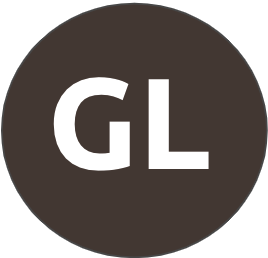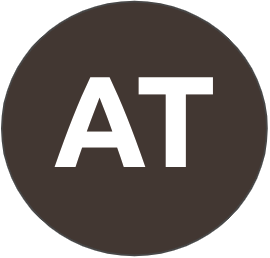Diversity & Inclusion: Unconscious Bias
405 Posts
Hello everyone,
I wanted to share a couple of thoughts/perspectives I have been learning as part of a new course I am taking regarding diversity and Inclusion topics. The one I started today deals with unconscious bias and starts with how we see and deal with overall diversity. Unconscious biases in this course are defined as learned stereotypes that are automatic, unintentional, deeply ingrained, universal, and able to influence behavior.
If you are wondering why we are talking about Diversity topics in CCL - from my perspective, we want to build relationships and establish a broad coalition of communities who are informed about the work that we do and what we want to accomplish with our preferred climate solution. In order to achieve this, we need to understand as much as possible different perspectives. I apologize for the extremely long post, but I felt the content was important.
Here are some points that were addressed in today's class lead by Lisa Nishii, an associate professor and expert on inclusion in organizations with eCornell:
Suggested reading: Search for the article on Google: “White Privilege: Unpacking the Invisible Knapsack” by Peggy McIntosh. I cannot share the link electronically because you need special permission to do so for large groups. You also need to note that a White woman wrote this article and it was written based on her life experience. I especially appreciated the notes after the article where she explains how we can perceive her comments and how the material could be used in Diversity courses.
Suggested videos: Cracking the Codes Joy DeGruy "A Trip to the Grocery Store",
https://www.youtube.com/watch?v=NW4ROduDzYM. This video deals with what one person encountered when she took a trip to the grocery store and how she had help from an ally.
And if none of this helps you understand or help you begin to think of unconscious bias, watch episode 4 of a series entitled “100 Humans” on Netflix. I found it entertaining and informative. I like videos or shows that help explain challenging topics.
As usual, if you have any questions or comments about any of this, please send me a note to karina.ramirez@citizensclimate.org.
With gratitude always,
Karina
I wanted to share a couple of thoughts/perspectives I have been learning as part of a new course I am taking regarding diversity and Inclusion topics. The one I started today deals with unconscious bias and starts with how we see and deal with overall diversity. Unconscious biases in this course are defined as learned stereotypes that are automatic, unintentional, deeply ingrained, universal, and able to influence behavior.
If you are wondering why we are talking about Diversity topics in CCL - from my perspective, we want to build relationships and establish a broad coalition of communities who are informed about the work that we do and what we want to accomplish with our preferred climate solution. In order to achieve this, we need to understand as much as possible different perspectives. I apologize for the extremely long post, but I felt the content was important.
Here are some points that were addressed in today's class lead by Lisa Nishii, an associate professor and expert on inclusion in organizations with eCornell:
- “If you look at corporate diversity mission statements, there's actually a bit of a range in how companies define diversity. And there are two main sets of characteristics that might be included. One is what some people call surface-level or demographic characteristics, such as gender and race, ethnicity, age, national origin, religion, disability status, and sexual orientation, and then there are other, what some people call deeper level characteristics, such as people's personality and their values, and the things that they're passionate about. Perhaps their personal interests. And both sets are assumed to influence the way that people approach their work and the perspectives that they have about work and life in general.”
- “The assumption is that people have different experiences as they go through life depending on which of these groups they belong to. Another reason, that perhaps is even more important, is that these are the different identity groups that are associated, have been associated historically, with differences in status, and access to opportunities and to privilege within society. And we refer to these as arbitrary status hierarchies, and the word arbitrary is in there because the status differences are not based on actual differences in competence or ability, but are based on what somebody happens to be born as, and yet they influence the assumptions that people make about competence and potential.”
- “In the U.S., the social identity groups that would pass this kind of exercise include gender, and race-ethnicity, class, sexual orientation, religion, age, disability…but diversity is often seen as a buzz word for gender and for race ethnicity here in the U.S. And so, why is that the case? Because it's broader than that. There are a few likely explanations. It's easy to see, it's salient. We have more data and numbers related to gender and race probably because it's easier to count and see. The historical context of slavery is obviously important here in the U.S. And managing race and gender continue to be really big challenges for organizations. So, as a result, there's a lot of research… But please keep in mind that it's important not to equate diversity with those two dimensions alone. It is broader than that and the dynamics that underlie a lot of the examples that I'll be giving you do extend to the other dimensions of diversity that are also associated with these arbitrary status hierarchies.” Two examples she shared included hiring someone who was homegrown internally vs. a mid-career hire from the outside of an organization. She noted having someone from the outside impacted the access that they felt they had to voice their opinion, have access to information or how they interacted with other employees. The other example was to be mindful of the types of differences we look at when we think of diversity. She said “although race-based issues really kind of take center stage here in the US, this is not the case in Japan where I grew up, because the population is ethnically almost completely homogenous. But there continued to be much more serious issues related to gender in Japan, as compared to the US."
- “I'd like you to keep in mind that in the U.S., the groups that are protected by equal employment law tend to align with those where there is unambiguous evidence about historical discrimination - surface level demographic identity groups that I spoke about. But it's also important for you to keep in mind that just because a particular identity group is not protected by law in your country or by law in your state within the US, does not mean that it might not be a dimension about which you need to be mindful [about] within your organization.”
Suggested reading: Search for the article on Google: “White Privilege: Unpacking the Invisible Knapsack” by Peggy McIntosh. I cannot share the link electronically because you need special permission to do so for large groups. You also need to note that a White woman wrote this article and it was written based on her life experience. I especially appreciated the notes after the article where she explains how we can perceive her comments and how the material could be used in Diversity courses.
Suggested videos: Cracking the Codes Joy DeGruy "A Trip to the Grocery Store",
https://www.youtube.com/watch?v=NW4ROduDzYM. This video deals with what one person encountered when she took a trip to the grocery store and how she had help from an ally.
And if none of this helps you understand or help you begin to think of unconscious bias, watch episode 4 of a series entitled “100 Humans” on Netflix. I found it entertaining and informative. I like videos or shows that help explain challenging topics.
As usual, if you have any questions or comments about any of this, please send me a note to karina.ramirez@citizensclimate.org.
With gratitude always,
Karina
Replies
Search Forums
Forum help
Select a question below
CCL Community Guidelines
- Discuss, ask and share
- Be respectful
- Respect confidentiality
- Protect privacy
CCL Blog Policy Area Categories
- Price on Carbon
- CBAM
- Clean Energy Permitting Reform
- Healthy Forests
- Building Electrification and Efficiency



